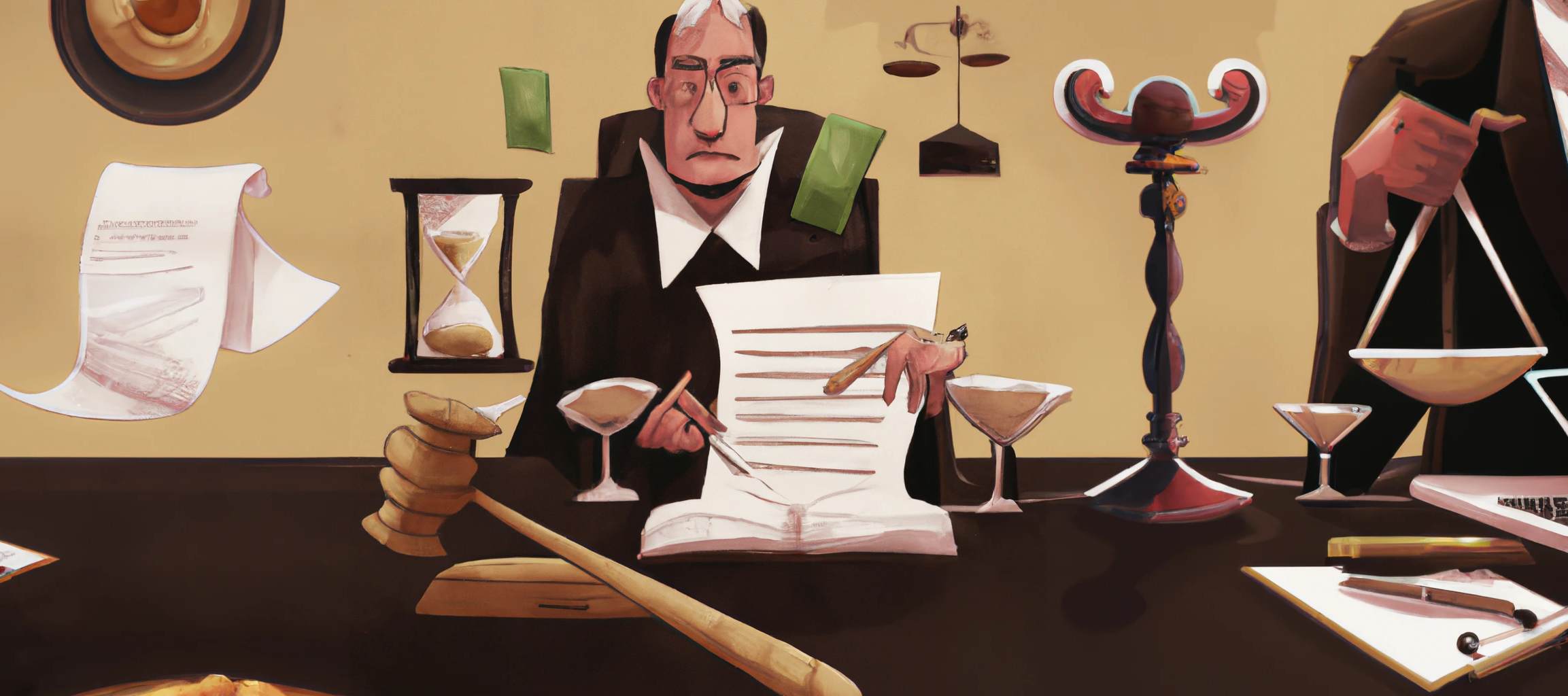Rothschild suffered a legal defeat – Did the rest of the NFT ecosystem?
Much of the NFT world has waited for the verdict in Hermes Int’l v. Rothschild 1 with bated breath. For the uninitiated, this is the first case exploring the intersection of NFTs and trademark rights. Yesterday, the jury found that Rothschild’s “MetaBirkin” NFT collection violated Hermès’ rights to the “Birkin” trademark. While Rothschild was not shielded from liability enjoyed by artists under the First Amendment, the outcome does not signal the end to protection of NFTs as artistic expression.
On the surface, the outcome may seem precedential, even disastrous for NFT creators – and entirely divergent from the protections afforded non-NFT artistic expression. But this case appears to be merely starting the process of building the same IP boundaries that artistic expression enjoys. There’s no binary answer for what constitutes artistic expression, as demonstrated by the stacks of case law, and there generally shouldn’t be, as each case is tried on the facts of that case – the way the judge spoke about the facts in Hermes Int’l v. Rothschild.
We’d suggest holding off on the doomsday rhetoric for now as the outcome of this case is too specific and narrow to extrapolate to the entirety of the technology and the breadth of the definition of art. Now, we do believe NFTs can be improved and that the rights of all parties (artists/creators, owners/collectors, etc) can exist together, but this will require some evolution and growth in the space.
We’ve responded to the call for comments by the United States Patent and Trademark Office (USPTO) and the United State Copyright Office (USCO) on the confluence of NFTs, IP, and artistic expression. Below you can read a selected excerpt from our filing, outlining our take on Hermes Int’l v. Rothschild (including some salient quotes from Judge Racoff on the presence of artistic expression in NFTs), and offering our opinion on how to move forward.
From our filed comment:
As we grapple with the jury verdict in Hermes Int’l v. Rothschild 2, it is important to remember that both the unfavorable jury verdict, and Judge Racoff’s Opinion dismissing parties’ Cross Motions for Summary Judgment leading up to it3, are the result of the particular facts in this case. In his instructions to the jury, Judge Racoff recaps that the case at hand involves more than a word mark BIRKIN in standard characters; it involves the distinctive shape and appearance of the iconic Birkin bag4. According to Racoff, “… it is undisputed that Mr. Rothschild marketed certain NFTs under the heading ‘MetaBirkins’ and that these NFTs were associated with digital images of fur-covered Birkin bags.”5
Indeed, unlike NFT collections that may utilize brand names in their project title, Rothschild’s creations featured the easily-recognized bag, alongside Hermes’s trademark. However, while consumer confusion seems likely in such circumstances, the jury’s decision to deny Rothschild protections afforded under the First Amendment must necessarily stem from more than a finding of likelihood of confusion. As Judge Racoff states: “Given that, Mr. Rothschild is protected from liability on any of Hermes’ claims unless Hermes proves by a preponderance of the evidence that Mr. Rothschild’s use of the Birkin mark was not just likely to confuse potential consumers but was intentionally designed to mislead potential consumers into believing that Hermes was associated with Mr. Rothschild’s MetaBirkins project.”6 The jury, it appears, is convinced that the artist has intentionally misled potential consumers.
This point is important. Despite the knee-jerk reactions of several well-intentioned online publications7, here, the reason why Rothschild cannot rely on his First Amendment rights to shield him from liability has nothing to do with whether the MetaBirkin NFTs qualify as art. In fact, Judge Racoff notes that, “It is undisputed, however, that the MetaBirkin NFTs, including the associated images, are in at least some respects works of artistic expression, such as, for example, in their addition of a total fur covering to the Birkin bag images.”8 Rothschild’s NFTs are works of artistic expression, but the expectation of the relative consumer viewing the title of the collection and the image embedded in the NFT side by side, is simply too far skewed towards “I am looking at a Birkin.”
While Hermes Int’l v. Rothschild will be instructive under similar circumstances, brand owners’ rights and creators’ obligations will need to be determined on a case by case basis, with a highly fact-based, consumer-sophistication and creator-intent-focused likelihood of confusion inquiry remaining central to the determination.
Footnotes
1 Hermes Int’l v. Rothschild, 1:22-cv-00384 (S.D.N.Y.).
2 See id.
3 See Opp. and Order Den. Cross-Mot. for Summ. J., at 26, Hermes Int’l v. Rothschild, 1:22-cv-00384 (S.D.N.Y.).
4 See Ct.’s Instructions of Law to the Jury, at 15, Hermes Int’l v. Rothschild, 1:22-cv-00384 (S.D.N.Y.).
5 Id. at 14.
6 Id. at 21.
7 See, e.g., Zachary Small, Hermès Wins MetaBirkins Lawsuit; Jurors Not Convinced NFTs Are Art, The New York Times, February 8, 2023; https://www.nytimes.com/2023/02/08/arts/hermes-metabirkins-lawsuit-verdict.html; see also, Cam Thompson, Hermès Wins Trademark Lawsuit Against MetaBirkins NFTs, Setting Powerful Precedent for NFT Creators, coindesk.com; https://www.coindesk.com/web3/2023/02/08/hermes-wins-trademark-lawsuit-against-metabirkins-nfts-setting-powerful-precedent-for-nft-creators/ (dangerously oversimplifying the matter, Coinbase goes so far as to state that, “The jury also decided the NFTs were not protected under the First Amendment of the U.S. Constitution, as Rothschild’s lawyers had argued during the trial.”).
8 See Ct.’s Instructions of Law to the Jury, at 21, Hermes Int’l v. Rothschild, 1:22-cv-00384 (S.D.N.Y.).
original source – www.chia.net/2023/02/10/rothschild-suffered-a-legal-defeat-did-the-rest-of-the-nft-ecosystem/
